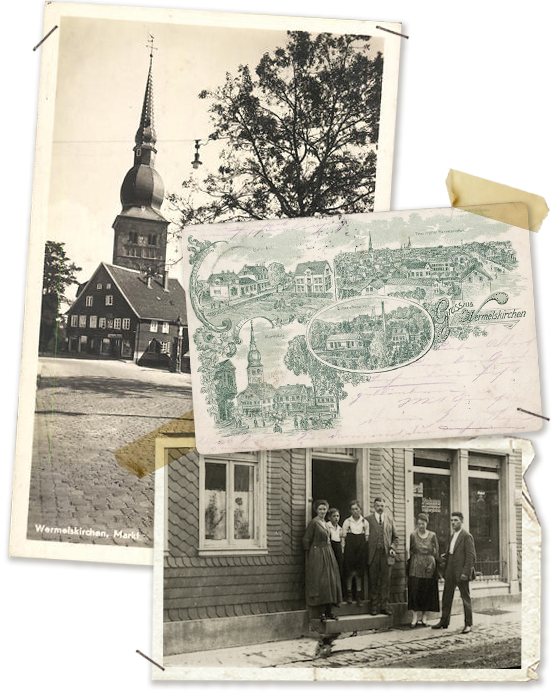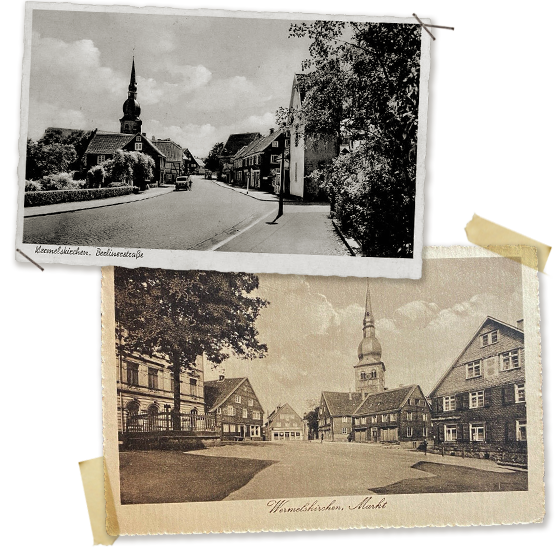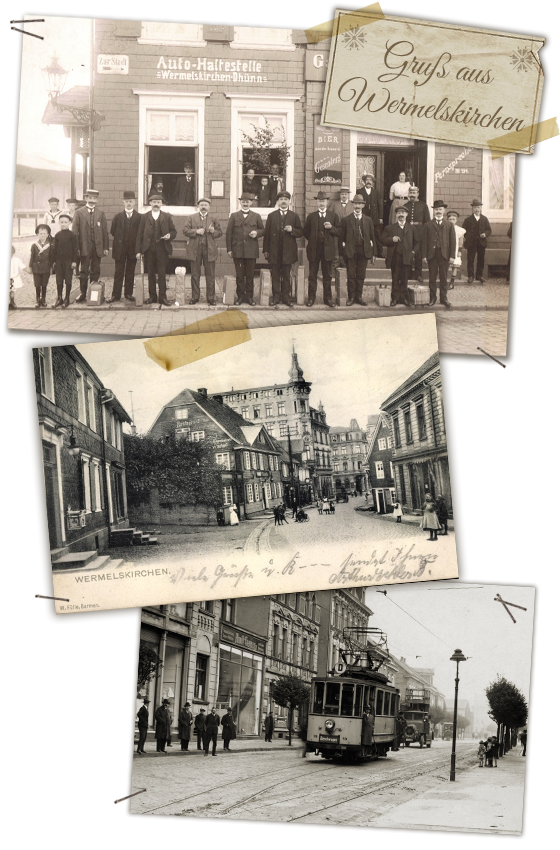Wermelskirchen

The history of Wermelskirchen settlement begins with the settlement of the Bergisches Land during the Saxon and Franconian landings from the 7th to 10th centuries. Presumably a small church was built on the site of today’s town church before the year 900.
The place was first mentioned in a document around 1150 as Werenboldeskirken. The place name Wermelskirchen has to be derived from a man named “Werinbold”. A bearer of the name Werinbold is already mentioned in the years 860 to 880 in the vicinity of the Cologne archbishops Gunthar and Willibert.
During the Hanseatic period, Wermelskirchen achieved greater importance in the transport of goods overland. In the 18th century, hauliers from Wermelskirchen were still transporting large quantities of goods for the Düsseldorf court.
History
In the 19th century, the later urban area of Wermelskirchen initially belonged to the three rural communities Dorfhonschaft, Oberhonschaft and Niederhonschaft in the Lennep district. These three parishes were merged in 1873 to form the parish of Wermelskirchen. Parts of the Niederhonschaft were given to Dhünn and parts of the Oberhonschaft to Remscheid. In the same year, the new municipality of Wermelskirchen was raised to the status of a city and received the Rhenish city code.
In 1885 Wermelskirchen celebrated its millennium. According to the research carried out by his first local chronicle, Peter Josef Heinrichs, a great pageant paid homage to the historicizing zeitgeist. In the vernacular, the Wermelskirchener is also referred to as Dellmann, which goes back to a Wermelskirchen pastor named Gustav Dellmann (* September 20, 1849, † October 28, 1914), who worked in Wermelskirchen from 1881 to 1910.
Shortly before the end of the Second World War, Wermelskirchen was declared a hospital town by Mayor Borcherding, in cooperation with the entrepreneurs Flöring, Jürgens and Wellershaus and the local commandant Major Meiser, in order to protect the town from bombing raids. Nevertheless, large parts of the urban area, in particular the Hünger district, suffered severe damage from a bomber attack on November 4, 1944 because the beacon for the city of Solingen had been driven off. Over 80 deaths in the whole of Wermelskirchen were to be mourned. Refugees from surrounding communities found protection in Wermelskirchen.
Short overview

STRIKING ONION TOWER
LANDMARK OF THE CITY
The original church, consecrated to St. Bartholomew, was first mentioned around 1300 in the liber valoris, but the Romanesque tower from the turn of the 11th to the 12th century, which is still preserved, indicates a higher age.
The right of patronage was owned by the Andreasstift in Cologne.
The Reformation was introduced to the church around 1560.
The preserved four-storey west tower was built from sandstone and tuff and shows a rich structure of pilaster strips, round arch friezes, cloverleaf arches and coupled acoustic arcades. The Michaelskapelle is on the second floor. In 1765 the tower received a new tail hood with a crowning onion tip.
